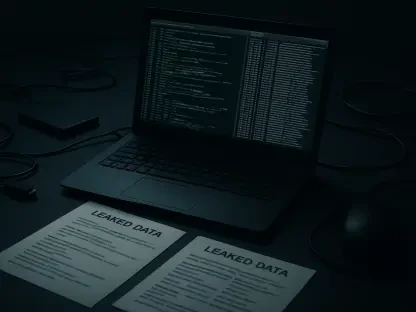The recent discovery of the Winos4.0 malware framework has sent shockwaves through the gaming community. Disguised as game installation and optimization tools, this sophisticated malware poses a significant threat to Windows gamers, compromising user privacy and data security. Understanding the operational mechanisms of Winos4.0 and implementing protective measures is crucial for gamers to safeguard their systems.
Understanding Winos4.0: A New Threat to Gamers
The Deceptive Nature of Winos4.0
Winos4.0 is cleverly disguised within seemingly benign gaming-related applications such as speed boosters and installation tools. The infection process begins when an unsuspecting user downloads a compromised gaming application. This initiates a series of actions designed to penetrate, establish persistence, and enable remote control by attackers. Upon installation of these malicious applications, Winos4.0 retrieves a disguised .bmp file from an external server. This file extracts a dynamic link library (DLL) enabling system integration for the malware. Users, unaware of the danger, inadvertently initiate a series of malicious activities by merely downloading an application they perceive to be a helpful tool.
This malware framework’s ability to remain covert manifests in its multi-stage infection process. Once the DLL file is in place, Winos4.0 modifies the system’s registry keys to create a persistent environment, ensuring malware activation even after system restarts. It then injects shellcode to load application programming interfaces (APIs), retrieve configuration data, and establish a command-and-control (C2) connection. Continuous communication with C2 servers allows remote operators to issue commands and download additional modules for further exploitation. These capabilities make Winos4.0 a sophisticated and dangerous threat to gamers who may be lulled into a false sense of security by its apparent usefulness.
How Winos4.0 Establishes Persistence
Once the Winos4.0 malware has infiltrated a system, it implements several sophisticated techniques to establish and maintain its presence. The malware’s persistence is primarily achieved through manipulating system registry keys, which are critical components of a computer’s configuration that govern how software and operating systems operate. By adjusting these keys, Winos4.0 ensures that the malware is automatically activated every time the system is restarted, making it exceptionally challenging to eradicate through simple reboots or standard system refreshes.
Moreover, the malware uses a series of advanced strategies to embed itself deeply into the system. After establishing its foothold, Winos4.0 injects shellcode into processes to load necessary APIs. These APIs are used to retrieve configuration data and set up crucial communication links with C2 servers. This constant communication with C2 servers means that remote operators can issue commands in real-time and download additional modules needed for further exploitation. This sophisticated mechanism for persistence and control demonstrates the advanced nature of Winos4.0 and why it demands serious attention from the gaming community and cybersecurity experts alike.
The Malicious Capabilities of Winos4.0
System Monitoring and Data Exfiltration
Winos4.0’s sophisticated design enables it to conduct a variety of harmful actions that significantly compromise user privacy and security. One of its primary functions is system monitoring, where it collects detailed information about the infected computer, including IP addresses, operating system details, and CPU specifications. This data is not only valuable for identifying potential vulnerabilities but also for tailoring future attacks or further infiltrations. By gathering comprehensive system details, attackers ensure they have a robust understanding of the target environment, enhancing their ability to deploy subsequent attacks effectively.
The malware doesn’t stop at merely collecting system information; it extends its invasive reach to screen and clipboard monitoring. This feature is alarmingly efficient in capturing sensitive information, such as passwords and cryptocurrency wallet addresses. Such data can be exploited directly for financial gain or used in subsequent attacks. Furthermore, Winos4.0 utilizes its established C2 connections to exfiltrate data from the infected system. This stolen data can include critical documents, intercepted screen activity, and monitored clipboard content, which is sent back to the attackers for analysis and exploitation. The comprehensive system monitoring and data exfiltration capabilities of Winos4.0 exemplify how dangerous and intrusive this malware can be.
Anti-Detection Mechanisms
One of the most troubling aspects of Winos4.0 is its sophisticated anti-detection mechanisms, which significantly complicate efforts to identify and neutralize the threat. The malware is designed to actively check for the presence of antivirus software from well-known vendors such as Kaspersky, Bitdefender, and Malwarebytes. If these security measures are detected, Winos4.0 can adjust its behavior accordingly to avoid raising red flags. In some scenarios, the malware may even halt its execution entirely to bypass detection, resuming its malicious activities only when the threat of exposure has diminished. This adaptability makes conventional antivirus solutions less effective, as they may not immediately recognize the well-concealed threats posed by Winos4.0.
Winos4.0’s ability to alter its behavior based on the security environment further complicates efforts to develop straightforward detection and remediation strategies. This malware employs a form of adaptive evasion, dynamically modifying its activities to circumvent the specific defenses of the infected system. As cybersecurity technologies evolve and improve, Winos4.0 can potentially adapt to these changes, maintaining its ability to remain undetected. This constant cat-and-mouse game between malware developers and cybersecurity experts underscores the need for advanced, proactive defense mechanisms, rather than solely relying on traditional antivirus solutions, to combat sophisticated threats like Winos4.0.
Sectors and Regions Targeted by Winos4.0
Financial Motivations and Crypto-Wallet Activity
The financial motivations behind Winos4.0 are evident in its design and functionality, particularly its focus on crypto-wallet activity. By capturing sensitive information, such as cryptocurrency wallet addresses, the malware is poised to facilitate significant financial theft. Attackers can divert incoming and outgoing transactions to their accounts, resulting in direct financial gains. Beyond this, the potential for Winos4.0 to capture critical personal financial information, like online banking credentials, adds another layer to the threat. This information can be sold on the dark web or used for further financial crimes, amplifying the danger posed by Winos4.0.
This malware’s ability to monitor and exfiltrate detailed financial information illustrates a deliberate strategy aimed at maximizing financial gains through data theft and surveillance. By understanding the flow of financial data within an infected system, attackers can exploit weaknesses and orchestrate more targeted, effective attacks. The increasing value of cryptocurrency and the growing popularity of online financial transactions present lucrative opportunities for cybercriminals, making financial systems an attractive target. The significant threat posed by Winos4.0 necessitates robust and comprehensive security measures to protect sensitive financial data from potential exploitation.
Educational Institutions as Targets
Another alarming aspect of the Winos4.0 malware is its potential targeting of educational institutions. Analysis of the malware’s code by FortiGuard Labs has revealed references such as a file labeled “Campus Administration,” suggesting that the attackers may be attempting to access administrative systems in schools and universities. The implications of such access are significant, as unauthorized entry into these systems could lead to the exposure of sensitive student and faculty data, including personal details, academic records, and administrative documents. The potential for such intrusions underscores the need for educational institutions to prioritize cybersecurity and implement robust protective measures against evolving threats like Winos4.0.
The targeted nature of these attacks reflects a broader strategy by cybercriminals to exploit organizations that may have valuable data but potentially weaker security protocols. Schools and universities often store extensive personal and administrative information, making them attractive targets for cybercriminals. The disruption caused by breaching these institutions’ systems can have far-reaching consequences, affecting not only the individuals involved but also the integrity and reputation of the educational institution itself. Consequently, the revealed intentions behind the Winos4.0 framework serve as a critical reminder for educational entities to rigorously assess and enhance their cybersecurity defenses.
Specific Regions Targeted
Reports from cybersecurity firms Trend Micro and Fortinet indicate that Winos4.0 is primarily distributed in regions where users may be more inclined to download modified software versions, such as China. Campaigns like Silver Fox and Void Arachne have specifically targeted Chinese-speaking users, leveraging social media, search engine optimization tactics, and messaging apps like Telegram to distribute the malware. This targeted approach demonstrates how hackers tailor their distribution strategies based on geographic and cultural factors to successfully lure victims. Regions with prolific software modification practices often represent attractive targets for malware campaigns due to the higher likelihood of users downloading compromised versions of popular applications.
The regional targeting of Winos4.0 underscores a broader trend among cybercriminals to adapt their strategies to exploit localized user behaviors and vulnerabilities. By focusing on regions where malware distribution tactics are likely to be more effective, attackers can increase their chances of successful infections. This strategic focus not only enhances the malware’s penetration rate but also facilitates the spread of infections within specific geographic areas. Such targeted efforts emphasize the importance of regional cybersecurity awareness and education to counteract these region-specific threats effectively. The cybersecurity community’s understanding of these distributions and targeted attacks forms the basis for developing regionally tailored defensive measures and response strategies.
Protective Measures for Gamers
Download Trusted Software
To protect against Winos4.0 and similar threats, gamers should adopt a stringent approach to downloading software. Only applications from reputable sources should be downloaded, and caution should be exercised with gaming optimization tools that appear on unofficial websites. Downloading cracked or pirated software significantly increases the risk of inadvertently installing malware. Such software often bypasses standard security protocols, creating vulnerabilities that attackers can exploit. By strictly adhering to trusted, official software sources, gamers can mitigate the risk of downloading and executing compromised applications that harbor sophisticated threats like Winos4.0.
Additionally, gamers should educate themselves on recognizing reputable sources and verifying the authenticity of software before downloading. This involves checking reviews, the developer’s credibility, and trusted cybersecurity recommendations. Staying informed and skeptical about suspicious or unfamiliar sources can drastically reduce the likelihood of downloading compromised software. By fostering a cautious and informed approach, users can protect their systems from the covert threats posed by malware disguised as legitimate gaming applications. Such vigilance is a crucial first line of defense in maintaining digital security in the face of evolving threats.
Regular Security Software Updates
Ensuring that antivirus software is regularly updated is a critical step in defending against emerging malware threats, including Winos4.0. Modern antivirus solutions are continuously updated with new threat signatures and protection mechanisms designed to identify and neutralize the latest malware threats. By keeping security software up-to-date, gamers can leverage these advancements to detect and block Winos4.0 before it can cause significant harm. This proactive measure is fundamental to maintaining a secure gaming environment, as outdated security software may not recognize or adequately respond to new and sophisticated threats.
In addition to updating security software, users should enable automatic updates to ensure that their systems always benefit from the most recent protective measures. Regularly checking for and installing updates can close security gaps that malware like Winos4.0 might exploit. Furthermore, additional layers of security, such as firewalls and network monitoring tools, can enhance protection. By combining updated antivirus software with comprehensive security practices, gamers can create a robust defense against a wide array of cybersecurity threats. This multifaceted approach is essential for mitigating risks and ensuring the safety of personal and sensitive information.
Network Traffic Monitoring
Monitoring network traffic for unusual activities or connections to unknown servers is another effective method to detect and mitigate the presence of malware such as Winos4.0. Implementing network traffic monitoring tools can help identify suspicious patterns and potentially harmful connections. These tools analyze data packets transmitted over the network, looking for anomalies that may indicate the presence of malware communicating with C2 servers. Early detection of such unusual network activities allows users to take corrective actions before significant damage occurs. This proactive monitoring is particularly important for identifying advanced malware that may evade traditional antivirus protections.
Gamers should consider incorporating specialized network traffic monitoring software designed to detect sophisticated threats. These tools can provide real-time alerts about suspicious activities, offering users the opportunity to investigate and respond promptly. Furthermore, understanding typical network behavior and being able to recognize deviations can be invaluable. By maintaining vigilance and using advanced monitoring tools, gamers can effectively counteract the covert operations of malware like Winos4.0. Regular monitoring and analysis of network traffic form an essential part of a comprehensive cybersecurity strategy aimed at protecting against evolving digital threats.
Conclusion
The recent discovery of the Winos4.0 malware framework has sent shockwaves through the gaming community. Disguised as game installation and optimization tools, this sophisticated malware poses a significant threat to Windows gamers, compromising user privacy and data security. Understanding the operational mechanisms of Winos4.0 and implementing protective measures is crucial for gamers to safeguard their systems.
Understanding how Winos4.0 functions and learning how to protect against it is essential to maintaining a secure gaming environment. This includes keeping software up-to-date, employing strong antivirus programs, and being vigilant of any suspicious downloads or pop-ups. Equipping oneself with the right knowledge and tools is key to preventing the detrimental effects of Winos4.0 malware on gaming systems.









